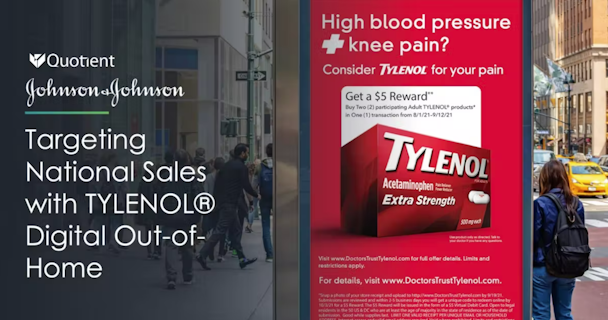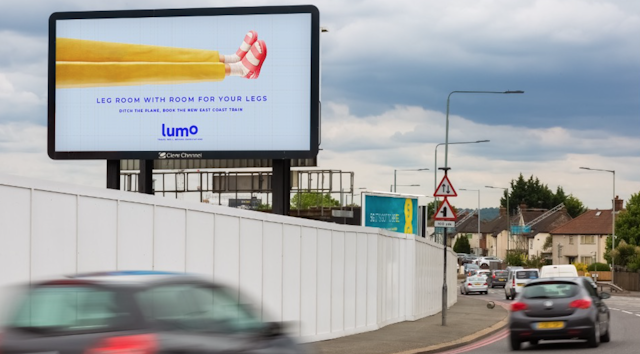How programmatic advertising is shaking up out-of-home
The tech took off during the pandemic as advertisers made the most of being able to instantly pause or scale back campaigns, but its full benefits are only now being understood. We take a look as part of The Drum’s Out-of-Home Deep Dive.

Tylenol won at The Drum Awards for Out of Home 2022 in the most effective use of programmatic category
Out-of-home (OOH) has long been regarded as an inflexible media channel, but innovation during the Covid-19 pandemic showed advertisers how programmatic could bring a traditional channel into the future.
Programmatic essentially uses automated technology to buy and manage ad spots and, in the case of digital out-of-home (DOOH), it means campaign delivery times can be cut from a day to one hour. The reactive nature of programmatic DOOH means you are able to communicate with an audience flexibly and adapt to changes quickly.
Ryan McPherson, who heads up Sightline Malaysia for GroupM’s programmatic DOOH arm, says huge investment into the space means that legacy perceptions of OOH as being a static, inflexible media channel with long lead times are “fundamentally outdated”.
He says he is witnessing a radical expansion of programmatic DOOH capabilities, particularly in the understanding of audience delivery around a screen at a given impact. “The ability to buy inventory programmatically allows much more flexibility and agility, such as starting and stopping campaigns at short notice, leveraging real-time movement insights and serving impressions when brands need to connect with present consumers.”
Advertisement
The OOH agency Rapport, for example, has used programmatic for a dynamic NBA campaign that turned on DOOH screens in regions where teams made it through the playoffs and switched them off in cities where a team had been eliminated.
The newly launched UK rail service Lumo has also been using programmatic DOOH, this time to intercept holidaymakers on their way to airports including London City, Gatwick, Heathrow, Stansted, Newcastle International, and Edinburgh, with Mediacom-owned agency Kinetic using live flight data to further tailor ads to travelers.

Like any emerging media channel, there will always be kinks to smooth out before full-scale adoption. Norm Chait, who is senior director and OOH practice lead at Quotient, says the channel has grown quickly so there is “still somewhat of a learning curve” – especially when it comes to the “opportunities that programmatic buying and activation can create for campaigns”.
Advertisement
He says brands and agencies that become early adopters will be “best positioned to leverage the technology today” and urges first adopters to “educate everyone else”. For him, growth and investment in the channel will only increase once advertisers know more about its testing and measurement capabilities.
Quotient recently won Best Use of Programmatic at The Drum Out of Home Awards 2022 with its campaign for the pain relief brand Tylenol, which targeted consumers with high blood pressure and who suffer from joint and arthritis pains. Ads were inserted in screens near gyms and blood pressure machines at retailers, while dynamic weather data allowed it to turn on ads when it rained – a time when demand for pain relief often rises.
Suggested newsletters for you
What’s holding back programmatic OOH?
Dorota Karc, head of programmatic at WallDecaux, tells The Drum that in OOH, you can easily run out of availability – “which is something the programmatic industry doesn’t know because in programmatic the availability is always there”.
She also says the industry needs to strive toward global technological trading standards as it comes out of its development phase. “One such critical standard is impression multiplier, which is a calculation used to determine the impression per ad play for an individual DOOH screen. Since OOH is a one-to-many medium, it means that one ad play can deliver multiple impressions, which in traditional OOH are called contacts. The supply-side platform (SSP) and demand-side platform (DSP) technology need to adapt to this, so the bid requests are sent essentially per plays, then calculated into impressions based on the multiplier values.
“It’s still not 100% because we are still building it and there are a lot more developments to come.”

